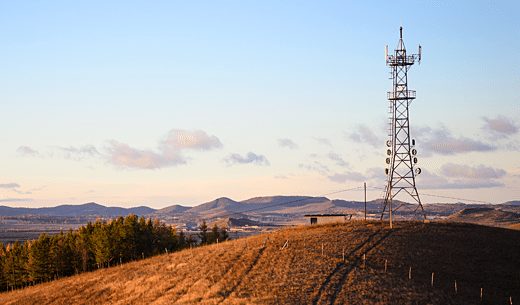Like many other successful companies, American Tower is outgrowing its name. “American” no longer refers just to the United States; towers in other parts of North and South America are now a big part of the company’s portfolio. And that portfolio has expanded beyond towers to include thousands of distributed antenna systems. But the name “American Tower” still accurately describes the core of the company’s business: towers right here in the U.S.
“We are building more towers today than we’ve ever built in the five years that I have been here at American Tower,” said Steven Marshall, president of the company’s U.S tower division. “There is a need to fill these coverage holes in the carriers’ networks, and the carriers are doing a valiant job of trying to fill those holes.”
DAS
DAS can “fill the holes” for carriers by enhancing both coverage and capacity, and American Tower has been a leader in the space. The company has had a lot of success with its indoor DAS systems, but has learned some tough lessons with outdoor DAS.
“They are difficult to zone, despite the fact that they’re discrete systems,” said Marshall. “And what you find is that they’re also very difficult to lease up.”
He explained that outdoor DAS are often built to meet the needs of a specific carrier and other carriers may not choose to lease any of the nodes. If they do, they may just want a subset of the nodes that were built, or they may ask for new nodes that have not been built.
“Getting lease up is really quite problematic,” said Marshall. “We in the last couple of years have de-emphasized outdoor systems. We don’t do many of them at all now because we don’t see a great return coming from them.”
Indoor DAS is a very different story. “We have been the leader in in-building DAS systems for the last eight or so years,” said Marshall, noting that American Tower has developed more than 360 in-building systems, including those at five NASCAR race tracks and many of the major casinos in Las Vegas. “You don’t have zoning requirements [and] you tend to get lease-up across the whole system because if somebody wants to be in a building they want to be pretty much in all the building,” he said. “And you have less ongoing maintenance cost because it’s all inside rather than outside.”
Marshall said that he has seen property owners becoming “more realistic” when it comes to negotiating with companies that want to install a DAS in their building. “It sort of went wild at one point, where property owners wanted ridiculous levels of compensation,” he said. “I think that’s sort of pulled back and there’s a better sense of balance.”
International markets
American Tower will have more than 26,000 towers in Latin America when it completes its acquisition of BR Towers, which will add another 4,600 sites to its portfolio.
The company began its Latin American expansion in Mexico in 1999, then added Brazil in 2000. More recently American Tower has entered Colombia, Chile, Peru, Costa Rica and Panama. Much of the work involves new tower builds.
“Latin America is more in the traditional model for now, which is around new build outs to make sure 3G and 4G have the right coverage, at least in the urban areas to start with,” said Olivier Puech, American Tower’s CEO of Latin America. Puech said he is learning that connectivity in rural areas is a key priority for many Latin American governments.
“We see a lot of focus from the regulators and the operators and us as well on trying to build new towers or co-locate the operators in more rural areas, which are highly populated as well, or becoming more and more populated,” he said. Puech highlighted northeast Brazil and parts of rural Mexico and Colombia as high growth areas.
Puech said that like the U.S., Latin America will see significant DAS and small cell work in the years ahead. He sees more interest in indoor DAS than in outdoor systems.
“Small cells I think is a work in progress,” said Puech. He said that regulators in Latin America, particularly Brazil, are looking at ways to help accelerate the ramp-up of small cell technologies. “The role of companies like ours in the value chain is still a little bit unclear,” he said. “So we look with a lot of interest to help the carriers there, and see if the tower business model somehow is applicable to this technology.”
Follow me on Twitter.

American Tower shares lessons learned in DAS, LatAm
ABOUT AUTHOR
